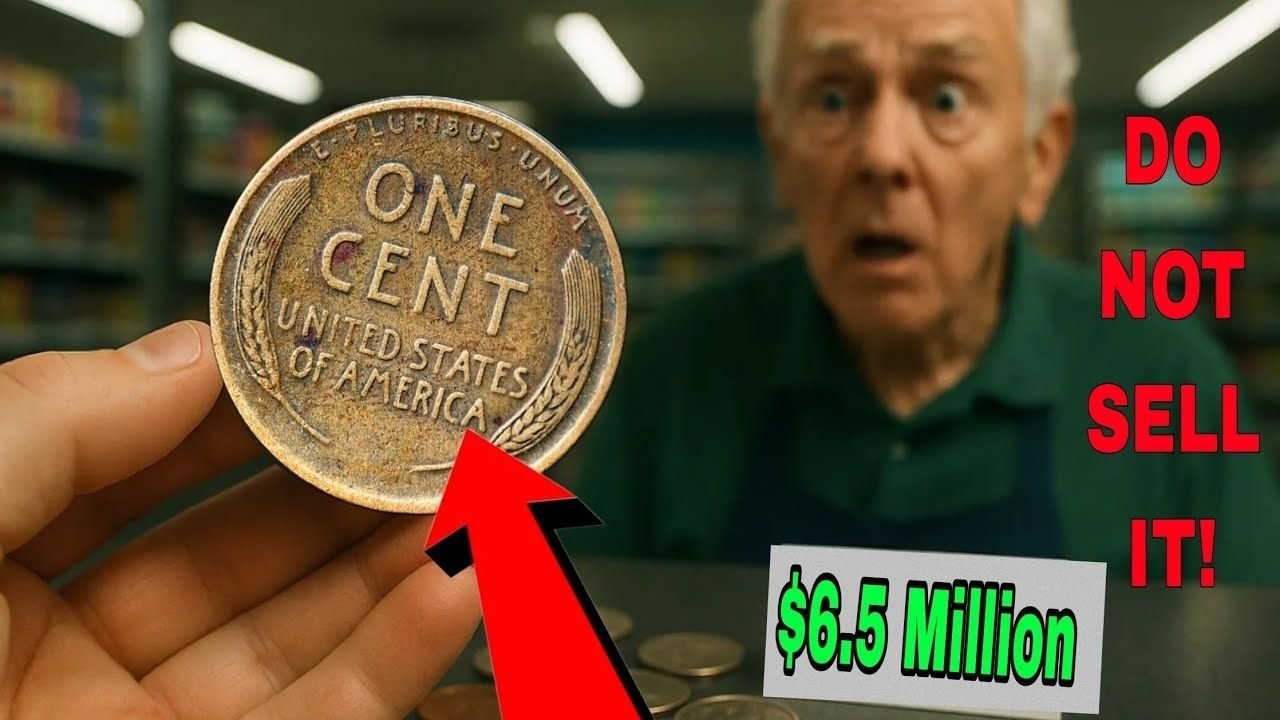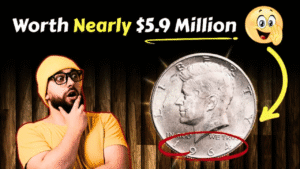Ever wondered if that penny in your pocket could be a life-changing treasure? The 1943 Lincoln Wheat Penny, a tiny copper coin from World War II, has sold for over $1 million, with some collectors estimating its value could reach $120 million in pristine condition
. With its rich history and rare minting errors, this coin is a collector’s dream. Could you have one stashed in a jar or piggy bank? Let’s dive into what makes the Lincoln Wheat Penny so valuable and how to spot one that could make you rich!
The History of the Lincoln Wheat Penny
Introduced in 1909 to celebrate Abraham Lincoln’s 100th birthday, the Lincoln Wheat Penny was the first U.S. coin to feature a real person instead of a symbolic figure like Lady Liberty.
Designed by Victor David Brenner, it showcases Lincoln’s profile on the front and wheat stalks on the back, earning its nickname “Wheat Penny.” Minted from 1909 to 1958, billions were produced, and most are worth just a few cents today. But certain rare varieties can fetch millions.
Why Is the 1943 Lincoln Wheat Penny So Valuable?
The 1943 Lincoln Wheat Penny stands out due to a rare minting error during World War II. To save copper for the war effort, the U.S. Mint switched to zinc-coated steel for pennies that year.
However, a few copper planchets from 1942 were accidentally used, creating the ultra-rare 1943 copper penny. With only about 20 known to exist, these coins are among the most valuable in the world, with one selling for over $1 million and top estimates reaching $120 million for a pristine example.
Other Valuable Lincoln Wheat Pennies to Look For
While the 1943 copper penny is the star, other Lincoln Wheat Pennies can also bring in serious cash. Here are some key varieties to check for:
| Year | Mint Mark | Estimated Value | Why It’s Valuable |
|---|---|---|---|
| 1909-S VDB | S | $700–$100,000 | Low mintage, designer’s initials (VDB) |
| 1914-D | D | $1,500–$10,000 | Rare in high grades |
| 1922 “Plain” | None | $1,000–$15,000 | Die error, missing mint mark |
| 1931-S | S | Up to $4,000 | Low mintage |
| 1955 Double Die | Any | Up to $15,000 | Doubled text from minting error |
These coins are rare but could be hiding in your collection or loose change.
How to Spot a Valuable Lincoln Wheat Penny
Think you’ve got a rare penny? Here’s how to check:
1. Check the Date and Mint Mark
- Look under the date for a mint mark:
- S: San Francisco (often the most valuable)
- D: Denver
- No mark: Philadelphia
- Key years to watch: 1909, 1914, 1922, 1931, 1943, and 1955.
2. Examine the Material (Especially for 1943)
- 1943 Pennies: Most are silver-colored zinc-coated steel (common). Copper ones (brownish-red) are rare.
- Quick Test: Use a magnet. Steel pennies stick; copper ones don’t.
3. Look for Minting Errors
- Errors like double dies (e.g., 1955, where text appears doubled), off-center strikes, or missing mint marks (e.g., 1922 “Plain”) can significantly boost value.
- Inspect the coin closely with a magnifying glass for these quirks.
4. Check the Condition
- Coins in pristine, uncirculated condition are worth far more. Look for sharp details, no scratches, and original luster.
- Professional grading by PCGS or NGC can confirm the condition and value.
Tips for New Coin Collectors
New to coin collecting? Here’s how to start hunting for valuable Lincoln Wheat Pennies:
- Inspect Your Change: Always check pocket change or old coin jars for rare dates or errors.
- Protect Your Coins: Store pennies in acid-free plastic sleeves or flips to prevent scratches, fingerprints, or moisture damage.
- Learn Grading: Familiarize yourself with coin grading (e.g., Good, Fine, Mint State) to assess value.
- Stay Informed: Join coin collecting forums, attend local coin shows, or follow auction sites like Heritage Auctions for updates.
- Never Clean Coins: Cleaning removes the natural patina, drastically lowering value.
Real-Life Examples of Million-Dollar Pennies
- 1943 Copper Penny: One sold for $1.7 million in 2010, with estimates for top-grade examples nearing $120 million today.
- 1909-S VDB: A pristine example fetched $168,000 at auction due to its low mintage and historical significance.
- 1955 Double Die: A high-grade version sold for $124,000, thanks to its dramatic doubled text error.
How to Verify and Sell Your Penny
Think you’ve found a valuable Lincoln Wheat Penny? Follow these steps:
- Compare Features: Use resources like PCGS or Heritage Auctions to match your coin’s date, mint mark, and errors.
- Get It Authenticated: Have it graded by a trusted service like PCGS or NGC to confirm authenticity and condition.
- Sell Strategically: For high-value coins, auction houses like Heritage Auctions or Stack’s Bowers are best. For common coins, try local coin shops or eBay.
Pro Tip: Handle coins with gloves or tweezers and store them in protective holders to maintain their condition.
Could Your Penny Be Worth Millions?
The Lincoln Wheat Penny is a fascinating piece of American history, blending nostalgia with the thrill of discovery. While most are worth just a few cents, finding a 1943 copper penny or another rare variety like the 1909-S VDB could change your life. So, check your change, rummage through old collections, and keep an eye out for those key dates and errors. Your next penny could be worth $120 million!
FAQs About Lincoln Wheat Pennies
Q: Why is the 1943 Lincoln Wheat Penny so valuable?
A: The 1943 copper penny is rare because the Mint used zinc-coated steel that year, but a few copper planchets were accidentally struck, with only about 20 known to exist.
Q: How can I tell if my 1943 penny is copper?
A: Check the color (copper is brownish-red, not silver) and use a magnet. Copper pennies won’t stick; steel ones will.
Q: What other Lincoln Wheat Pennies are valuable?
A: Look for 1909-S VDB ($700–$100,000), 1914-D ($1,500–$10,000), 1922 “Plain” ($1,000–$15,000), 1931-S (up to $4,000), and 1955 Double Die (up to $15,000).
Q: How do I know if my penny is in good condition?
A: Check for sharp details, no scratches, and original luster. Get it professionally graded by PCGS or NGC for an accurate assessment.
Q: Where can I sell a rare Lincoln Wheat Penny?
A: High-value coins sell best at auction houses like Heritage Auctions or Stack’s Bowers. Common coins can be sold at local coin shops or on eBay.
Q: Should I clean my penny to make it look better?
A: No, cleaning damages the coin’s patina and reduces its value. Leave it untouched and consult a professional.




